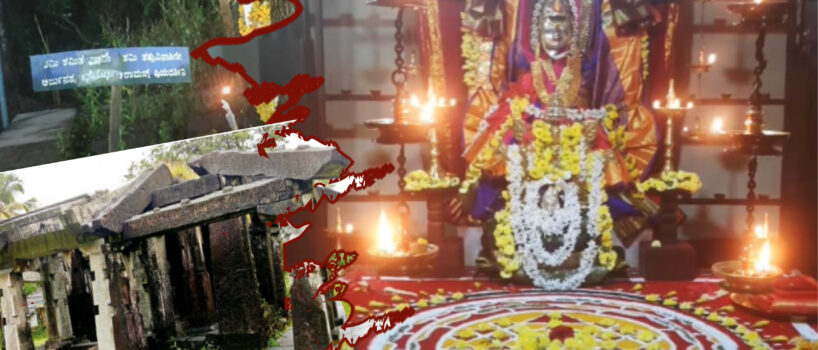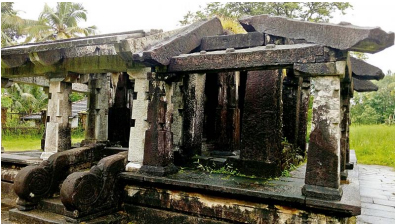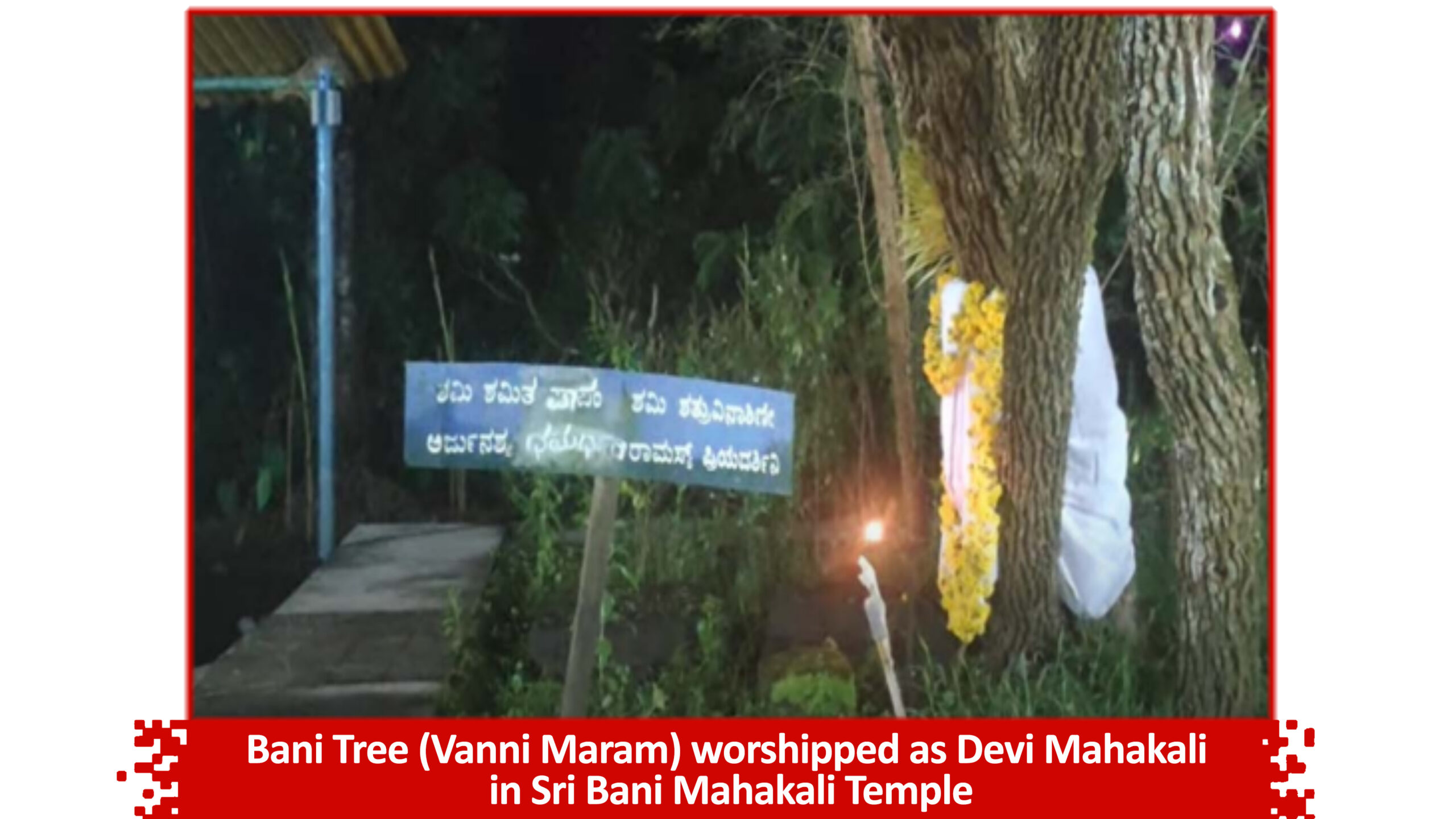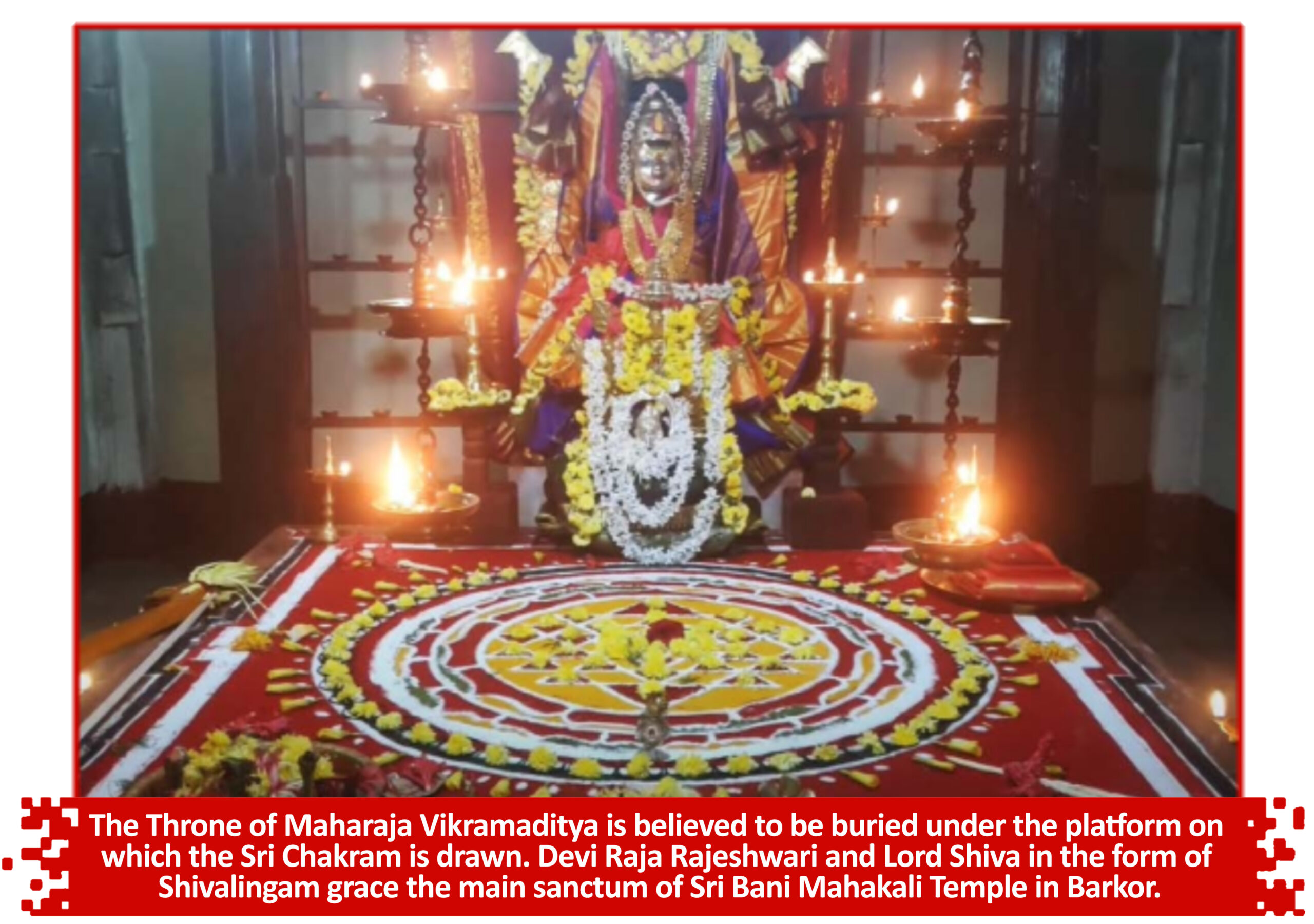
Maharaja Vikramaditya Series : POST 4
MAHARAJA VIKRAMADITYA AND SRI BANI MAHAKALI DEVASTHANA OF BARKOR
Location:
Simhasan Gudde, is named after Maharaja Vikramaditya’s throne which is believed to be buried in Sri Bani Maha Kali Devasthana in Barkor (Barakur). Barkor is located about 16 kilometres from Udipi, in the state of Karnataka, India. The area is located on the banks of river Seetha. ‘Gudde’ means mound or elevated place in Kannada.
Historical Significance of Barkor:
Port city Barkor on the banks of Sita River was not only the capital of Alupas, it was the sub-capital of Hoysala for some period and later it became a province of Vijayanagara Empire. Barkur was later ruled by Keladi Nayaks, Haider Ali and Tipu Sultan of Mysore and the British. Given the vicinity to Arabian Sea, this town was a busy commercial center almost from 2nd Century B.C. Evidences of Megalithic and Mesolithic ages have been discovered here.
It is believed that at onetime Maharaja Vikramaditya ruled here. The town boasts of a little over 100 stone and several copper plate inscriptions. They belong to the Alupa, the Hoysala, the Vijayanagara and the Keladi periods. Barkor used to be bigger in the olden days and was known as a ‘temple town’. The locals believe it used to have 600-650 temples but now only has 40 temples and even these are not being properly maintained. There was a lot of damage done because of the invasion of Muslim rulers.
This place is under protection of the Archaeological department now. However, this place which once thrived was first destroyed by Tipu Sultan and valuables in the fort were stolen, later the people stole bricks of the fort wall to build houses. It is said that the stone carved pillars and inscription stones can be found in and around Barkur homes as their construction material.
Research Findings:
- The Village is more than 2200 years and was part of Maharaja’s Vikramaditya’s empire. It was later ruled by the Pandya’s, Vijayanagara Kings and Keladi Nayakas.
- Betal or (Vedhalam) is supposed to have narrated his stories here to Maharaja Vikramaditya.
- There is a ‘Bani’ tree which is considered as Devi Mahakali and worshipped by the village people.
- It is believed that Raja Vikramaditya built a Shiva temple here.
- The name of the temple is Sri Bani Mahakali Devasthana. The name is derived from the sacred Bani tree who is worshipped as Devi Mahakali here.
- According to the local folklore a spirit called ‘Kundodhara’ is supposed to have brought Vikramaditya’s throne and buried it under a platform inside the main sanctum (garba graham) of the temple. There is a Moorthy of Sri Raja Rajeshwari and a Shivalingam in the sanctum. In front of it is the platform on which Sri Chakram is drawn and worshipped by the Villagers. There is grand festivity during Vijaya Dashami, the last day of Navarathri. They do special Pooja for Raja Vikramaditya and his throne every year during this day. The Sri Chakram drawn has four dwarams or doors. The one in the eastern direction is dedicated to Betal. Sridhara Swamy later on is said to have built the Betala Stambh 100 meters from the temple. It is considered as a ‘Siddhi Sthalam’. People offer prayers here to get their wishes fulfilled.
- Devaki Amma, head of the Simhasana Gudde Banni Mahakali Temple, has all the mythological details from memory. According to her a massive monolith (Betala Stambh) or pillar is present some 100 metres from the temple, where the Betal is said to have once stood while telling his tales to Maharaja Vikramaditya.
- Originally the finger ring and Sword of Vikramaditya had been kept here, but later sent to the Taluk office where it has been unfortunately lost. However, the throne’s cover still exists in the local Thaluk office.
- The local villagers claim they have the ‘hasige’ or (divan/bed) on which Maharaja Vikramaditya used to sit when he visited the villagers. They remove the cover of the hasige once in two years and offer worship to the hasige. It is believed that once this bed had many precious gems. They say that the ‘cotton’ in the hasige has remain unchanged from Maharaja Vikramaditya’s time. Swasthi Vachana Pooja is done for the hasige of Vikramaditya during which they chant praises of the great Maharaja Vikramaditya as they used to do in the olden days. The Pooja is done on Vijayadashami day every year. The Throne of Maharaja Vikramaditya is believed to be buried under the platform on which the Sri Chakram is drawn. Devi Raja Rajeshwari and Lord Shiva in the form of Shivalingam grace the main sanctum of Sri Bani Mahakali Temple in Barkor.
- The villagers share that once there was a fort and royal palace here.
- You can see the ‘Bani’ tree, platform under which the throne is supposedly buried, Shivalingam and Devi Raja Rajeshwari in this video. Kannada Video Link – https://www.youtube.com/watch?v=wlnDcrcGQAQ. (The contents of the video was translated and included in findings). Please see (5:19) minutes in video to see the Bani tree, the platform on which Sri Chakram is drawn, Devi Rajarajeshwari’s Moorthy and Shivalingam.
Contact Address:
Sri Bani Mahakali Temple, FP8V+394, Barkurpete, Karnataka – 576210, India.
References:
- Urban Legend – Barakuru , where Betal got off Vikram’s back! by Gururaj. A. Paniyadi (September 4th 2016) – https://www.deccanchronicle.com/lifestyle/travel/040916/urban-legend-barakaru- where-betaal-got-offvikrams-back.html
- https://www.tripoto.com/karnataka/trips/forgotten-history-and-temples-5e1ef53393cae
- Priest Narration – https://www.youtube.com/watch?v=wlnDcrcGQAQ.
Research by: Mr. Byrappa Chandra
Research & Edit by: Mrs. Sowmya Nikhil





